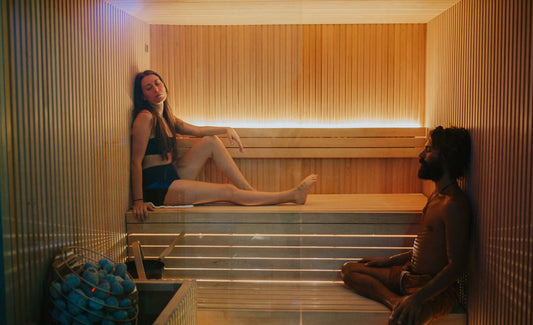The diverse clothing styles worn by Arabs across the Middle East and North Africa are a reflection of their rich cultural heritage, traditions, and modern influences. This article explores the traditional and contemporary attire worn by Arabs, focusing on both men’s and women’s clothing, with considerations for various cultural and professional settings.
Understanding Arab Attire
Arab clothing is deeply influenced by the region's history, climate, and social customs. The traditional attire varies widely between countries and even within regions, reflecting local cultures and historical influences. Modern attire, while incorporating global fashion trends, often maintains elements of traditional dress.
Men's Attire in Arab Countries
Traditional Clothing
Thobe and Dishdasha
- Color: Traditionally white, though other colors such as beige, grey, and black are also common.
- Fit: Loose-fitting, with a flowing design that provides comfort and modesty.
- Fabric: Lightweight cotton for hot climates, wool blends for cooler weather.
- Details: Often embellished with intricate embroidery on the collar and cuffs, particularly for formal occasions.
Kandura
- Design: Similar to the thobe, it is a long robe worn primarily in the Gulf states.
- Color: Predominantly white, with variations in color for different occasions or personal preference.
- Occasions: Worn daily by men in the UAE, Saudi Arabia, and other Gulf countries.
Headwear
- Ghutra and Keffiyeh: A traditional headscarf that can be white or checkered, worn with an agal (a black cord) to secure it in place.
- Taqiyah: A white, knitted cap worn underneath the ghutra or alone for everyday wear.
Modern Clothing
Business and Casual Wear
- Suits: In formal business settings, Western-style suits are common, often in conservative colors like navy, grey, or black.
- Shirts and Ties: Dress shirts in white or light colors, paired with ties for formal occasions.
- Casual Attire: Includes polo shirts, trousers, and loafers or casual shoes.
Footwear
- Sandals and Loafers: Popular in casual settings, with leather or fabric options.
- Dress Shoes: For formal occasions, including Oxfords or Derbies in neutral colors.
Women's Attire in Arab Countries
Traditional Clothing
Abaya
- Design: A long, flowing black cloak worn over regular clothes, often with elaborate embroidery or embellishments.
- Fit: Loose and modest, designed to cover the entire body except for the hands, feet, and face.
- Occasions: Worn daily in many countries, especially in public settings and during religious observances.
Hijab
- Design: A headscarf worn to cover the hair, neck, and sometimes shoulders.
- Colors and Patterns: Range from plain colors to intricate patterns and designs.
Jilbab
- Design: Similar to the abaya but can be in various colors and designs, often worn in more casual settings.
- Occasions: Commonly worn by women in countries like Morocco and Tunisia.
Modern Clothing
Business and Casual Wear
- Suits and Blouses: In professional settings, women may wear tailored suits, blouses, and skirts or trousers.
- Dresses: Modest dresses that cover the arms and knees are common for both work and social events.
Footwear
- Flats and Heels: Depending on the setting, women might choose from flats, loafers, or heels, often in conservative styles and colors.
- Sandals: Popular in warmer climates, with options ranging from casual to more formal designs.
Accessories
- Jewelry: Simple, elegant pieces are often chosen, including earrings, necklaces, and bracelets. The style can vary greatly depending on personal preference and occasion.
- Handbags: Structured and often in neutral tones to complement the outfit.
Special Considerations and Tips
Cultural Sensitivity
Adherence to Traditions
- Respect for Modesty: When visiting or interacting with people from Arab cultures, it’s important to respect traditional dress codes, especially in more conservative regions.
- Occasion-Specific Attire: Different occasions may require different types of attire, such as more formal wear for weddings and religious ceremonies.
Modern Influences
- Fashion Trends: While traditional clothing remains significant, modern Arab fashion incorporates global trends, leading to a blend of traditional and contemporary styles.
- Adaptation: Many Arabs seamlessly adapt their traditional clothing for modern contexts, mixing and matching with Western styles.
Professional Settings
Business Attire
- Conservative Choices: In professional settings, conservative business attire is preferred, including well-tailored suits and modest dress choices for both men and women.
- Adaptation to Local Norms: In international business settings, it’s advisable to understand and adapt to the local dress code while maintaining professionalism.
Social and Family Gatherings
- Variety of Styles: Attire for social events can range from traditional dress to more contemporary styles, depending on the family’s or community’s norms and personal preferences.
- Respect and Presentation: Ensuring that your clothing is appropriate for the occasion and demonstrates respect for the host’s cultural practices is crucial.
Conclusion
Arab attire is a rich tapestry of traditional and modern influences, reflecting a deep cultural heritage as well as adapting to contemporary fashion trends. Understanding the nuances of both traditional and modern clothing for men and women provides insight into the diverse ways Arabs express their identity and professionalism.
By appreciating these styles, whether for personal, professional, or social contexts, one can gain a deeper respect for the cultural practices and sartorial choices that define the Arab world.


